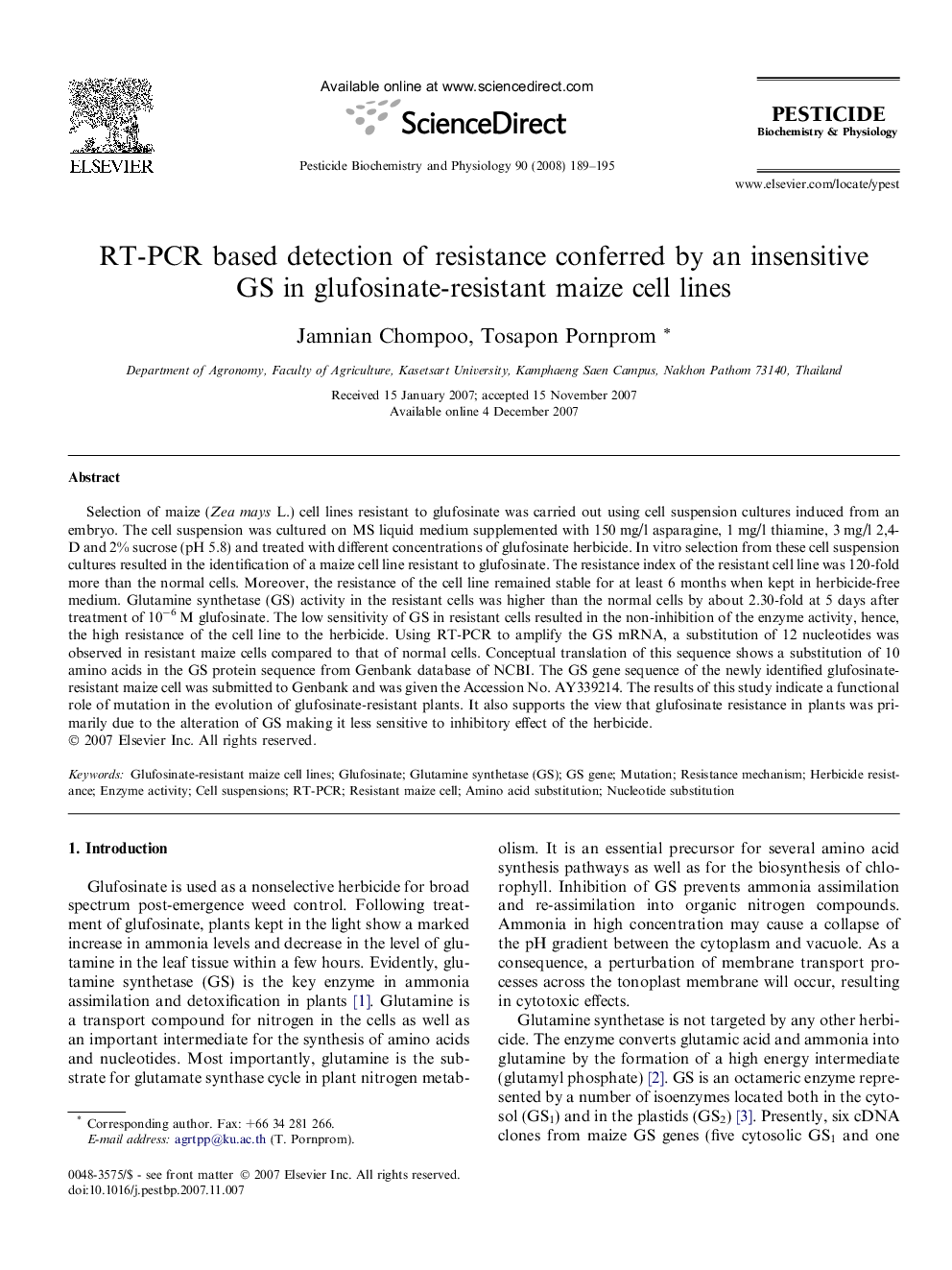| Article ID | Journal | Published Year | Pages | File Type |
|---|---|---|---|---|
| 2009941 | Pesticide Biochemistry and Physiology | 2008 | 7 Pages |
Selection of maize (Zea mays L.) cell lines resistant to glufosinate was carried out using cell suspension cultures induced from an embryo. The cell suspension was cultured on MS liquid medium supplemented with 150 mg/l asparagine, 1 mg/l thiamine, 3 mg/l 2,4-D and 2% sucrose (pH 5.8) and treated with different concentrations of glufosinate herbicide. In vitro selection from these cell suspension cultures resulted in the identification of a maize cell line resistant to glufosinate. The resistance index of the resistant cell line was 120-fold more than the normal cells. Moreover, the resistance of the cell line remained stable for at least 6 months when kept in herbicide-free medium. Glutamine synthetase (GS) activity in the resistant cells was higher than the normal cells by about 2.30-fold at 5 days after treatment of 10−6 M glufosinate. The low sensitivity of GS in resistant cells resulted in the non-inhibition of the enzyme activity, hence, the high resistance of the cell line to the herbicide. Using RT-PCR to amplify the GS mRNA, a substitution of 12 nucleotides was observed in resistant maize cells compared to that of normal cells. Conceptual translation of this sequence shows a substitution of 10 amino acids in the GS protein sequence from Genbank database of NCBI. The GS gene sequence of the newly identified glufosinate-resistant maize cell was submitted to Genbank and was given the Accession No. AY339214. The results of this study indicate a functional role of mutation in the evolution of glufosinate-resistant plants. It also supports the view that glufosinate resistance in plants was primarily due to the alteration of GS making it less sensitive to inhibitory effect of the herbicide.
